Flow Buttons now support user inputs, and Outlook Tasks service added
Passing data to your flow buttons
Today I would like to share the newest capability we’ve added to buttons: Flow buttons can now receive user inputs at run time. Thanks to this new capability, buttons can now serve you in many more business use cases throughout the day. Imagine opening a bug in Visual Studio, or creating a new contact in Dynamics, all with the click of a button.
First, just a reminder of the basics: If you aren't familiar with button flows, they are an easy way to kick off a workflow from your iOS or Android device with a single tap. To use a button, download the app for Android or iOS and sign in.
Also, if configured to do so, a button you triggered can send info on your location, your user details, and the current time. You can find an example for such a useful button flow in a recent Flow of the week blog.
Now, heading on to our newest capability: When creating a button, you may want to define which information is required from the user when that button is triggered. In turn, a user who taps that button will be asked to provide these specific details. The details will be used upon execution.
There are countless daily operations which can now be triggered easily from your mobile device, using button flows.
Below are just a few examples of such useful button templates:
- Create a new contact in Dynamics CRM
- Add notes to a Dynamics CRM contact
- Create a bug in Visual Studio
- Create a new task in Asana
- Add a new item to a Basecamp to-dos list
- Create an Outlook task from a button
- Add a new card to a Trello list
- Add a new task to Wunderlist
Note: You can create button flows from template or from blank, either from the Flow portal or from your mobile device.
Getting started
Select a template from the list above, or start creation from blank. For this example let’s use: Create a bug in Visual Studio.
When defining required fields for such buttons, keep in mind what details are required from the user. In this template, the button is already defined to ask for bug title and description. You could ask for more inputs using the “Add text input” option.
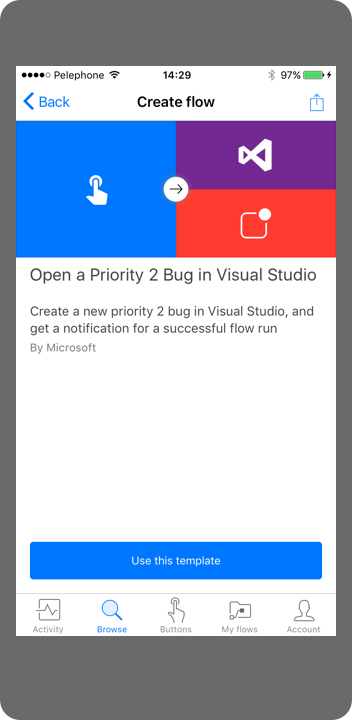
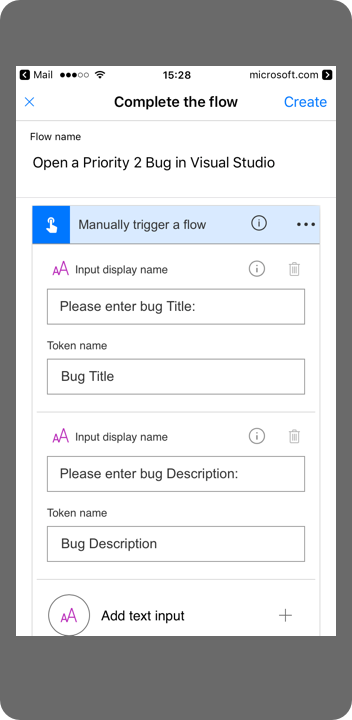
Fill your ‘Account name’ and ‘Project name’ for creating the item in Visual Studio.
Tap Create to save your flow. Your button is now saved.
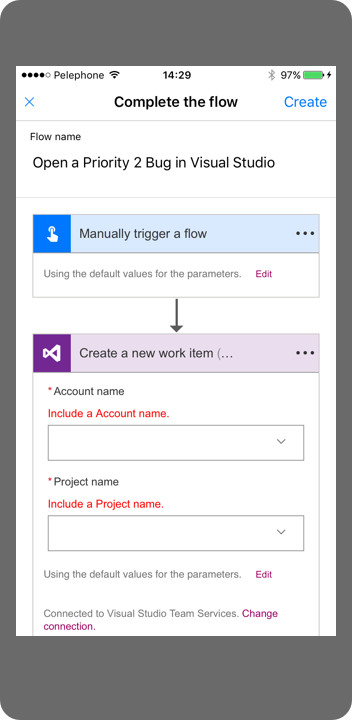
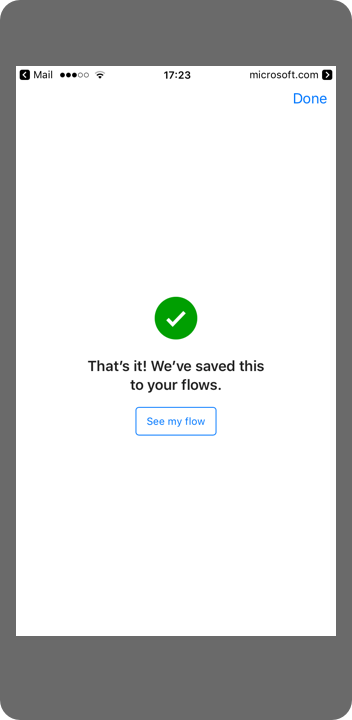
Running a button flow
You can run all your buttons from the buttons tab. In our example, find your new button in your Buttons tab and tap it:
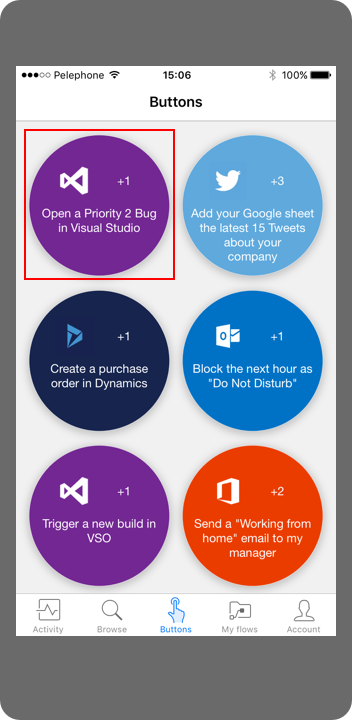
Enter the details for the bug you are reporting. In our example, you will be asked to enter ‘bug title’ and afterwards ‘bug description’. Then tap Done.
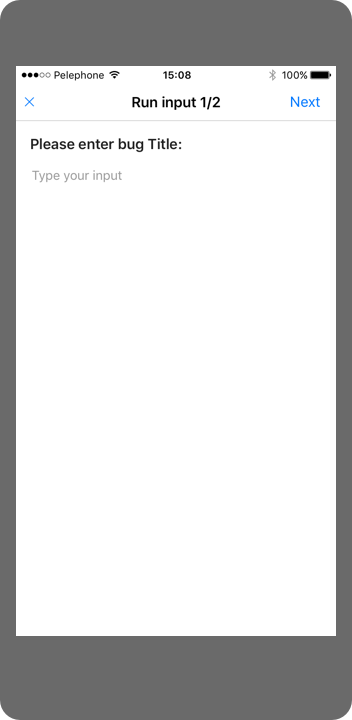
That’s it, your button flow is running. As part of this flow you will also get a push notification when the bug is created. You will also be able to track this flow run along with all your runs in the Activity tab.
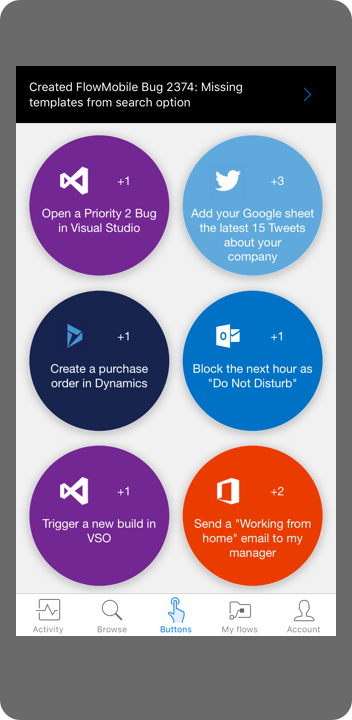

I’m certain this new functionality will help you be much more effective with your workday.
You can read more about this topic here.
Outlook Tasks and HelloSign support
Also, we’ve added support for two new services this week: Outlook Tasks and HelloSign. Outlook Tasks service lets you create, read, synchronize, update and delete your tasks that are secured by Azure Active Directory in Office 365 or a Microsoft account. For example, you can now create a new outlook task using a Flow button.

HelloSign enables secure electronic signatures that are business-caliber, easy-to-use and legally binding.
Learn more and connect with us
View our app video, and check out our documentation that covers app concepts, from getting started to more advanced capabilities.
Visit the Mobile section on our community and share what you’re doing, ask questions or even submit new ideas and reach out to us on Twitter.


